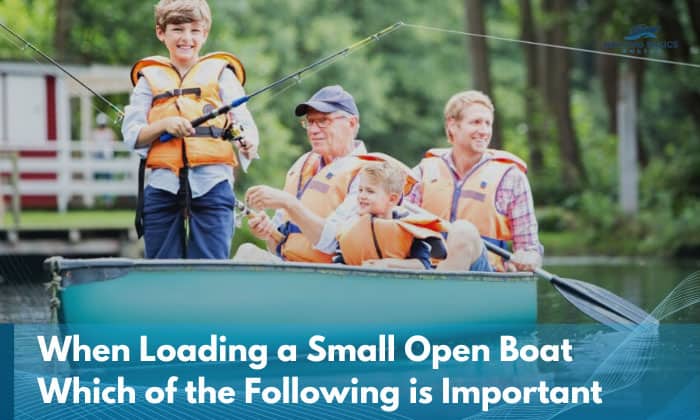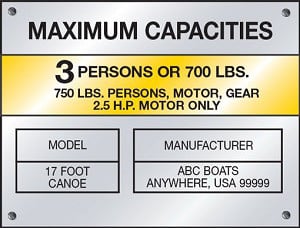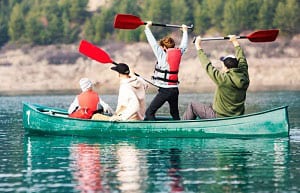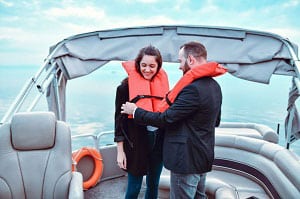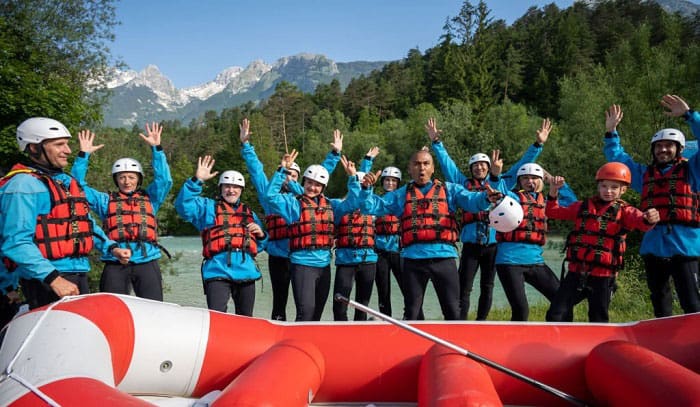What we bring along for every boating trip should always be one of our top priorities. Besides that, we also need to anticipate our vessels’ limits in that regard. These are why there’s more than one answer to, “When loading a small open boat which of the following is important?”
Above anything else, you need to pay attention to the limit indicated in the vessel’s capacity plate. Be sure not to go over it with all your load considered.
Additionally, it’s equally important to maintain balance and weight distribution. Bringing all the necessary safety equipment is a given, too.
Table of Contents
Vital Factors to Consider When Loading a Small Open Boat
Basic boating tips tell you that you should always be mindful of how you load a boat, regardless of the type of vessel you’re riding. However, small open boats complicate things because they often have lower freeboard, lower weight capacities, and susceptibility to capsizing.
At best, you have to always be aware of these factors to know how to load a boat of this size.
1. Capacity Limits
It’s simple, really. Follow what’s written on the plate, particularly the Maximum Persons and Maximum Gross Load figures.
But what if your vessel doesn’t have a capacity plate? One way to know your passenger limit is to multiply the vessel’s length and width and then divide it by 15. The resultant figure is your passenger capacity (e.g., A 10-foot long and 3-foot wide dinghy should only take 2 people at most).
2. Balance and Weight Distribution
Position your passengers and other items on the boat so that the vessel will always be level with the water. Balance from all sides should be maintained, so have your passengers seated evenly as much as possible.
Small boats like canoes and kayaks rely on live ballasts to maintain balance. That only means their ability to keep their stability depends mainly on how the cargos and passengers weigh them down. As such, this only underlines the importance of following the number on the capacity plate.
3. Safety Equipment
Safety equipment should be automatically prioritized whenever you’re loading a boat by yourself, safety equipment should be automatically prioritized.
Remember, the top cause of boating-related fatalities is people falling overboard and drowning. Such is the case because they weren’t wearing a life jacket or lacked other basic safety equipment.
Helpful Tips When Loading a Boat
- Stick to the capacity plate’s numbers.
- Bring only the necessary items aboard, safety gear included.
- Adopt a mindset that your small vessel, whether it’s a canoe, kayak, skiff, or dinghy, has a very low tolerance for overloading.
- How your passengers come onboard should be given equal importance as they could cause the watercraft to tip over and capsize the moment they enter.
- With that in mind, where should passengers enter? The safest way is for them to step low onboard at the center of the vessel. Fill up the vessel from there, followed by the seats on the stern and bow sides.
- Always load passengers one at a time and ask them to immediately take a seat once they’re aboard. Should they need to move around the vessel, instruct them to keep their center of gravity as low as possible.
- Make wearing a life jacket a must, and ask your passengers to refrain from sticking their limbs out of the vessel.
- Don’t forget about tools like rope and bungee cords that will help secure any items you bring along and, more importantly, keep them in place so they won’t affect the optimal weight distribution.
Conclusion
With all things considered, the best answer to “When loading a small open boat which of the following is important?” is to just follow the capacity plate. Every other vital safety consideration will inevitably follow suit, especially the ones featured here.
Keep this a habit whenever you’re out boating in the Florida Keys or any of your favorite waterways and fishing spots. You’ll only be sparing yourself and your passengers from highly avoidable, potentially life-threatening accidents.

“My intention from the first day establishing Boating Basics Online is to provide as much help as possible for boaters who want to experience a first safe and convenient trip. So feel free to join us and share your beautiful journeys to the sea!”

